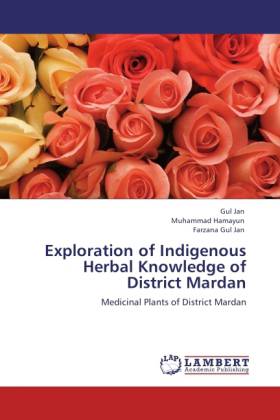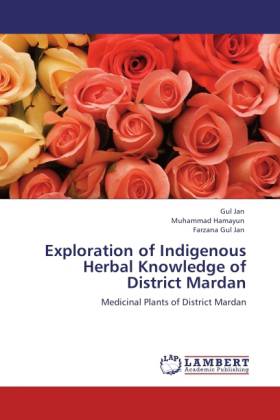
- Afhalen na 1 uur in een winkel met voorraad
- Gratis thuislevering in België vanaf € 30
- Ruim aanbod met 7 miljoen producten
- Afhalen na 1 uur in een winkel met voorraad
- Gratis thuislevering in België vanaf € 30
- Ruim aanbod met 7 miljoen producten
Zoeken
Exploration of Indigenous Herbal Knowledge of District Mardan
Medicinal Plants of District Mardan
Gul Jan, Muhammad Hamayun, Farzana Gul Jan
Paperback | Engels
€ 58,45
+ 116 punten
Omschrijving
A survey was conducted in June 2010 to July 2011 to explore the indigenous medicinal knowledge of the area. It was found that the area is rich in indigenous knowledge regarding the utilization of medicinal plants in their daily life. A total of 90 plant species were reported, from 45 families and 70 genera. The highest number of medicinal species was from Solanaceae followed by Rosaceae and Cucurbitaceae. The medicinal plants were being used for different diseases like Malaria, Stomach troubles, Cough, Diarrhea, and Dysentery. It was noted that the old age people have more indigenous knowledge as compared to younger. Plants are being collected from wild and there is lack of cultivation practice. Some of the plants are marketed as well. It is concluded that indigenous medicine are playing an important role in the life of the habitants. The utilization of this knowledge with scientific manner is more benefited for health care.
Specificaties
Betrokkenen
- Auteur(s):
- Uitgeverij:
Inhoud
- Aantal bladzijden:
- 124
- Taal:
- Engels
Eigenschappen
- Productcode (EAN):
- 9783846516508
- Uitvoering:
- Paperback

Alleen bij Standaard Boekhandel
+ 116 punten op je klantenkaart van Standaard Boekhandel
Beoordelingen
We publiceren alleen reviews die voldoen aan de voorwaarden voor reviews. Bekijk onze voorwaarden voor reviews.











